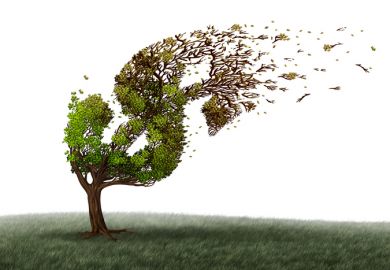Our perceptions of South Asia's oldest nation-state have changed considerably since western ethnographers first set foot there in the 1950s.
Nepal's mountain peoples subsequently provided the material for hundreds of PhD theses, and western interest in Nepal was drawn to the peripheral and the exotic, ignoring the intellectual traditions maintained at the centre by a high-caste urban elite. This began to change during the late 1970s, when research appeared on the country's serious economic problems. And then, when a popular movement persuaded the king to establish a parliamentary system and a new constitution in 1990, the country began to attract the attention of political scientists, lawyers and human-rights activists.
Western writings now evince a better appreciation of the most critical issues facing Nepal. But they still struggle to explain issues such as the presence of a well-entrenched communist movement, and why it is that, while Nepal is one of the most aided "developing" nations on earth, a large chunk of its population continues to suffer unacceptable levels of immiseration and marginalisation.
Until recently, westerners' tendency to perceive Nepal through a lens of their own fashioning went largely unchallenged. But this is changing. Over the past 12 years we have seen Nepal's democracy stumble, witnessed the massacre of King Birendra and his family, and seen the emergence of a Maoist insurgency and a state response that claimed 8,000 lives between them. The generation of Nepalis born since the late 1950s includes a growing number who are wide awake to such issues and determined to address them. The monthly magazine Himal South Asian and the weekly newspaper The Nepali Times provide Nepali perspectives on Nepal and the broader region written in excellent English. Some of the individuals associated with these journals are also involved in the Himal Association, whose non-profit making projects include a public-access social sciences library, a film festival and a book publishing programme, of which State of Nepal, now in its fifth print run, is the latest product.
State of Nepal comprises 16 chapters, each by a different author: specialists or practitioners in their fields, anthropologists, journalists and cultural activists. Each chapter addresses an issue that is considered critical for Nepal's present and future, and every writer has an axe to grind. The first three chapters are more fact based than others. Rajendra Pradhan provides an overview of the place of caste and ethnicity in the organising framework of the Nepali state and argues for egalitarian pluralism; Sudhindra Sharma argues that Hinduism is less crucial as a determinant of Nepali identity than Nepal's status as a Hindu kingdom might suggest; and Sanjay Upadhya provides a breathless account of Nepali politics since 1990.
On recent political issues, Deepak Thapa gives probably the best account yet written of the context and causes of the Maoist insurgency, and Kanak Mani Dixit considers the future of the monarchy of Nepal from the perspective of summer 2001, when King Gyanendra succeeded his murdered brother. C. K. Lal mounts a strong challenge to domestic and international perceptions of Nepal as a rural hill country, pointing out that soon half of its population will live in the 23 per cent of its territory on flat land abutting India.
Several authors address the shortcomings and failures of "development" ( bikas ) in Nepal. Saubhagya Shah is especially brutal in his treatment of non-governmental organisations, and his commentary on the "global development regime" is delightfully caustic. Seira Tamang alleges that development has compounded class, ethnic and gender inequalities, and Sujeev Shakya blames the squandering of Nepal's promising economy after 1994 partly on the fact that multilateral and bilateral agencies "cranked up the pressure for liberalisation... unmindful of the challenges such a course faced in Nepal". As an illustration of the way the development industry has robbed Nepal of its self-respect, Dipak Gyawali cites the oft-told story of how Pokhara town was supposed to have become aware of the existence of wheels for the first time in the 1950s when an airplane landed there.
But these authors do not place the blame for Nepal's problems entirely on foreign shoulders, and are quite prepared to direct criticisms inwards too.
Drawing some fascinating historical parallels between western figures such as Galileo and Marx and their Nepali contemporaries, Dipak Gyawali blames Nepal's lack of a "scientific culture" on "wrong turns" in its history.
Shanta Dixit argues that her country's education system is "possibly the worst in South Asia" - 25 per cent of schoolchildren attend private schools, while "those with doctorates in education from western universities are not to be found in schools, either to teach or to find out how Nepali children are being taught. They are too 'qualified' to teach and evidently have nothing left to learn."
Manjushree Thapa embeds translations of two contemporary short stories and two poems in a discussion of the trials and tribulations of Nepali writers and readers, while Pratyoush Onta provides a discussion of Nepal's "media boom" in a characteristically rumbustious manner.
Three authors are non-Nepalis: Bhim Subba, a Bhutanese, explains that "Nepal has been trying to sell electricity while it is water that India needs"; Tanka Subba, an Indian Nepali academic, discusses the insecure status of the descendants of Nepali migrants to India; and Shastri Ramachandaran has an interesting account of Indian perceptions of Nepal.
State of Nepal is by no means flawless. The editing shows signs of being rushed, and some chapters will date rather quickly. Given more space, it would be possible to take strong issue with some of the opinions expressed.
But overall the book demonstrates what can be achieved by a group of intelligent, principled people against a background of pessimism and decay, and serves as a timely corrective to any misconceptions the world may have about Nepal's capacity to speak for itself. State of Nepal will remain at the top of my general reading list for years to come.
Michael Hutt is reader in Nepali and Himalayan studies, School of Oriental and African Studies, London.
State of Nepal
Editor - Kanak Mani Dixit and Shastri Ramachandaran
ISBN - 99933 13 22 X
Publisher - Himal Books
www.himalassociation.org
Price - $20.00
Pages - 312
Register to continue
Why register?
- Registration is free and only takes a moment
- Once registered, you can read 3 articles a month
- Sign up for our newsletter
Subscribe
Or subscribe for unlimited access to:
- Unlimited access to news, views, insights & reviews
- Digital editions
- Digital access to THE’s university and college rankings analysis
Already registered or a current subscriber?



